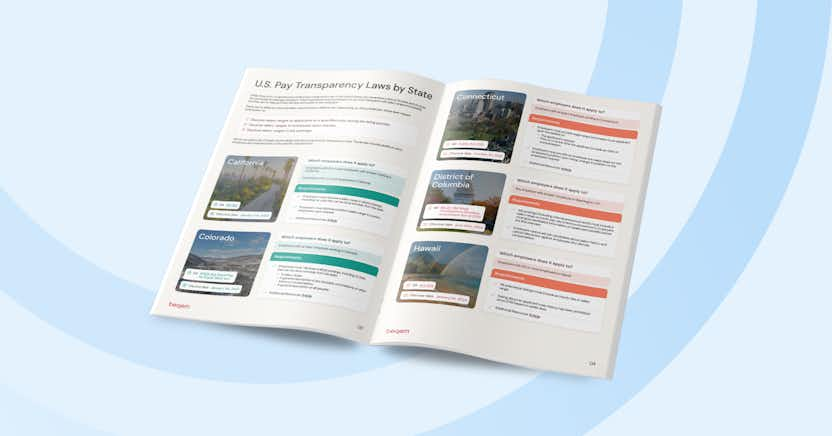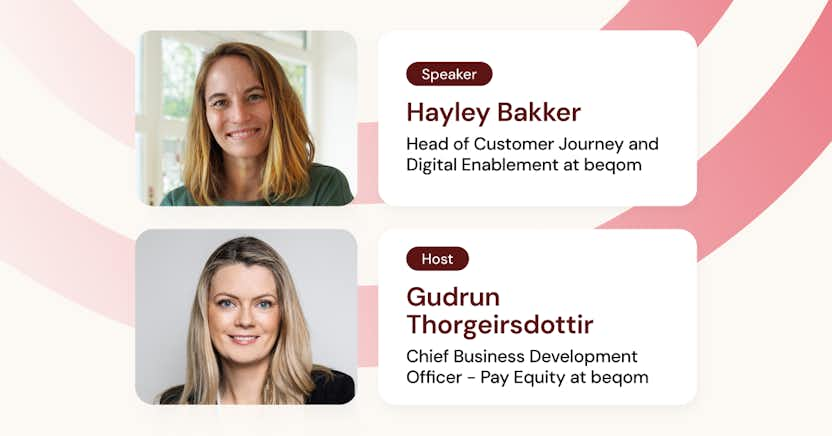Goal Management: Strategies for Success

Products used
Goal management provides a clear direction for an organization and promotes focused efforts toward predetermined objectives. It also helps establish effective employee recognition strategies, fostering workplace satisfaction and enhanced motivation.
Mastering goal management is essential for realizing all these benefits. However, over 90% of senior executives fail to reach their strategic goals due to poor implementation. Connecting organizational goals to employee goals, implementing continuous feedback mechanisms, and flexibility in rewards can help ensure that goals are achieved.
By breaking down the goal management process into five key stages and following a predefined framework, supported by flexible performance and rewards technology, you can ensure effective goal-setting and promote the long-term success of a company. Other key tips, such as celebrating achievements, identifying personal motivators, and maintaining goal flexibility, will minimize delays and uncertainties while enhancing employee performance.
Understanding goal management
Before you set a goal management plan, it’s important to understand the meaning and importance of goal setting in management, the various types of goals, and approaches to achieving them.
What is goal management?
Goal management refers to the planning, setting, tracking, and achievement of goals. In organizational settings, goal management provides individual employees with a personal path to follow, establishing a greater sense of structure and focus company-wide.
What are the three types of goals in management?
Understanding the attributes of different goals in management can help businesses properly direct their efforts across varying employee positions to achieve their overall objectives. Here are the main three types of goals that can be set in a business environment:
- Strategic goals: Qualitative, long-term goals that aid in a business’s brand image, growth, and reputation.
Example: Reduce carbon footprint by 10% over the next five years.
- Tactical goals: Medium-sized goals that contribute towards achieving a company’s strategic goals.
Example: Identify areas of high energy consumption and pinpoint opportunities for improvement.
- Operational: Smaller or individual-based goals to help employees prioritize their work responsibilities.
Example: Adopt eco-friendly behaviors such as reducing energy use, opting for public transportation, and minimizing single-use plastic waste.
The benefits of effective goal management
Here are the key benefits of setting and managing goals in a business environment.
- Improve communication: Well-defined objectives keep everyone in the company on the same page and streamline the communication between departments, teams, and employees. Thus, employee communication efforts are directed toward achieving collective goals rather than focusing on conflicting priorities. This also eliminates ambiguity and facilitates productive, ongoing discussions between managers and employees.
- Enhance performance: Researchers have found that formal goal-setting processes increase employee engagement, subsequently improving workplace optimism, which positively reflects on each individual’s performance.
- Increase staff motivation: Strategic goal management breaks up a long-term objective into short-term milestones, providing opportunities for regular achievements. This motivates employees to work past setbacks and feel a sense of satisfaction when a smaller goal is achieved, further encouraging their progress.
- Facilitate focus: Studies show that having a goal, even when it’s not reached, provides a sense of direction and meaning. When every employee has a distinct goal to work toward, they can concentrate on their own role and contribution to the organization.
Goal management frameworks
A structured approach is often needed as businesses work towards their goals and measure results. Goal management frameworks provide a way to strategically prioritize, plan, and achieve goals, which directly benefits both businesses and employees. It’s established that certain frameworks lead to decreased stress and increased engagement.
The most effective goal-setting frameworks that companies can implement in their operations include:
- SMART - Highlights that goals should be Specific, Measurable, Attainable, Relevant, and Time-bound.
- Agile - Aligns all employees to a single, flexible goal.
- OKR - Facilitates measurable Objectives and Key Results.
- KPIs goal methodology - Key Performance Indicators to help measure goal progress.
- WOOP goal methodology - A Wish, Outcome, Obstacle, Plan methodology to promote positive thinking.
- Goal pyramid - Breaks down a larger goal into smaller, more attainable ones.
- BHAGs (Big Hairy Audacious Goals) - Sets a large, long-term goal that inspires employees.
- The balanced scorecard goal-setting framework - Breaks down goals into four perspectives - financial, customer, internal business, and innovative/learning.
The most suitable framework for your organization depends on its goals and size. For instance, managing goals in a global enterprise may require a more flexible approach that can quickly adapt to market changes and other circumstances.
Implementing goal management in your organization
Incorporating a goal management framework requires careful planning and patience. Rushing this process can overwhelm employees, cause confusion, and lead to resistance. Developing a predefined structure with distinct stages can mitigate these unwanted consequences and streamline the overall process.
Goal management can be divided into the following five key stages.
1) Defining organizational and individual objectives
The first stage is defining your objectives and establishing how they align on both an organizational and employee level. Individual employee goals should clearly contribute to a company’s strategic goals to ensure collective workforce efforts.
Employees also need to understand the broader context of their objectives and their impact on the overall success of a business. This will foster motivation and provide a sense of unity, leading to improved performance and cooperation.
2) Developing a work plan based on organizational structure and individual responsibilities
After individual goals and their relation to each other have been defined, a clear work plan can be implemented. Businesses must consider their hierarchical, process-based, and communication-based structure to ensure that the work plan can be effectively implemented.
At this stage, companies can also focus on setting goals that can be altered as the workforce is restructured and priorities shift.
3) Implementing continuous feedback mechanisms for performance improvement
As the employees work towards achieving their operational goals and contribute to the overall organizational objectives, it’s vital to employ feedback mechanisms. This gives employees an opportunity to share their thoughts in a constructive manner and receive an assessment that indicates where they can improve their performance.
Feedback mechanisms can include:
- Performance reviews
- One-to-one meetings
- Surveys
- Group discussions
- Anonymous feedback boxes
- Self-assessment feedback
4) Monitoring and evaluating achievements to facilitate business development
Monitoring employees’ progress and achievements allows the identification of weak points, and businesses can choose to adapt their processes and objectives accordingly.
Employees who fall behind their goals can be assigned to coaching by senior management to help them improve their performance.
Receiving adequate support and guidance to succeed encourages employees to be more committed to contributing to the company’s objectives.
5) Rewarding performance to recognize contributions toward organizational goals
High performers and employees who stand out as key contributors to the organization’s goals should receive tailored rewards. This can include monetary rewards such as gift cards, bonuses, and promotions or non-monetary recognition such as certificates, trophies, and flexible work arrangements.
Businesses can also reward employees with salary adjustments that are strategically set through pay equity software.
Publicly awarding high performers and sharing success stories within the organization can further inspire and motivate other employees to follow their example.
5 best tips for effective goal setting and management
Companies can face numerous challenges when setting and managing goals. A lack of clarity, communication, and structure can delay progress and negatively impact employee performance. With these tips, your organization can avoid these obstacles and foster productive employee relationships throughout the goal management process.
Understand the purpose behind the goal
Whilst setting personal goals for employees can be beneficial, its effectiveness diminishes in the absence of an understanding of the company’s overarching objective.
Goals with a greater purpose can inspire employees and allow independent accomplishments since they know the context and importance of their own goals.
Set a manageable number of goals and celebrate every achievement
One of the main advantages of strategic goal management is the ability to set smaller, short-term goals. As employees regularly reach milestones, they are encouraged to continue progressing toward their main objective and can celebrate their way to success.
Identify personal motivators to enhance goal achievement strategies
Understanding employees on a personal level can lead to a harmonious collaboration of mutual benefit. Through open communication channels, regular assessments, and performance observations, employees’ personal motivators can be identified.
This allows managers to tailor goals to each team member and allocate resources more effectively for maximum impact.
Employ positive wording and affirmative goal-setting
Do not underestimate the importance of providing positive feedback and affirmative goal-setting that acknowledge progress and visualize future success.
It was found that the omission of commentary on performance has a direct, negative relation with workers’ effectiveness. Based on the psychological theory of operant conditioning, behavior that is rewarded will likely be repeated, whilst punishment and even nonresponse achieve the opposite.
Maintain flexibility in goal management to adapt to changing priorities
Goals are not permanent and can be altered as a business grows. New developments, internal restructuring, and leadership changes can cause priorities to change, and organizations must be prepared to adapt accordingly.
This adaptation is not limited to simply switching strategies but includes changing paths without losing process or causing stress among employees. It requires having performance and rewards systems that are easy to change and adapt. Embracing flexibility helps both businesses and employees to become more resilient and face evolving challenges as they push toward meeting their goals.
Enhancing goal management strategy with technology
Setting a clear goal management strategy in your organization can foster positive collaboration, increase employee motivation, and provide greater operational structure. Long-term goals can be more efficiently tracked and achieved while considering each employee’s responsibilities, contributions, and effectiveness.
Goal management can be optimized with performance management software. Assisted by generative AI, this software streamlines the goal-setting process to increase productivity, communication, and transparency among employees.
Contact us to discover more about beqom’s intuitive platform and learn how we can help you set your business on track for success.

















